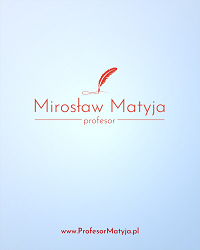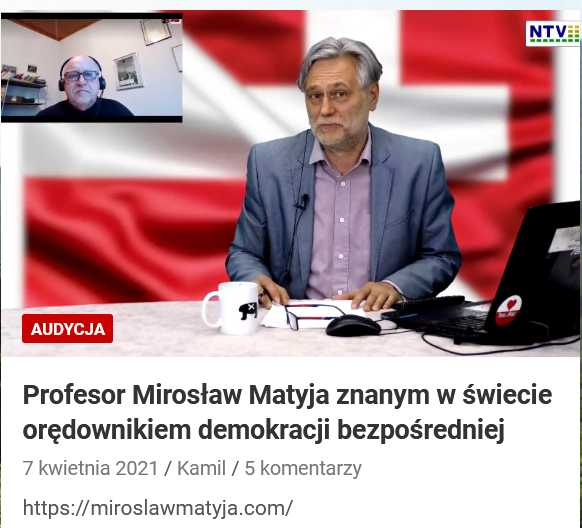The Influence of Project-Based Learning (PBL) and Motivation on Correspondence Learning Outcomes By Controlling Linguistic Intelligence
Abstract
This research aims to ascertain (1) differences in correspondence learning outcomes for students taught with project-based learning (PBL) and those taught with the direct instruction (DI) model with controlling linguistic intelligence, (2) the influence of the interaction between the learning model and motivation study of students' correspondence learning outcomes by controlling linguistic intelligence, (3) differences in correspondence learning outcomes of students with high learning motivation taught with PBL and those taught with DI by controlling linguistic intelligence, and (4) differences in correspondence learning outcomes of students with low learning motivation who studied with PBL and those studied with DI by controlling linguistic intelligence. This research method employed a quasi-experiment with a 2 x 2 factorial design. The research sample for this study consisted of 68 students enrolled in the Department of Office Administration, specifically those taking Correspondence Subjects. The selection of participants was conducted through a random sampling method. The data analysis technique used two-way ANOVA at a significant level of α = 0.05. The study's findings demonstrated that (1) students instructed using PBL achieved higher correspondence learning outcomes than students taught using the DI model while controlling linguistic intelligence. (2) An interaction effect was observed between learning models and learning motivation on correspondence learning outcomes by controlling linguistic intelligence. (3) The learning outcomes of students with high learning motivation who studied with PBL were higher than students who studied with DI by controlling linguistic intelligence. Also, (4) the learning outcomes of students with low learning motivation taught with DI were higher than those taught with PBL by controlling linguistic intelligence. The results of this research denote that it is essential to adjust the learning model in Correspondence Subjects by considering students' learning motivation.
Keywords
Full Text:
PDFReferences
S. A. Octavia, Model-model pembelajaran. Deepublish, 2020.
T. G. Economy.com, “Human Development_Country Ranking.” 2021.
I. S. Nasution and E. S. Siregar, “Implementasi Pendekatan TPACK (Technological Pedagogical Content Knowledge) Bagi Guru SD Muhammadiyah 12 Medan,” Ihsan J. Pengabdi. Masy., vol. 3, no. 2, pp. 206–212, 2021.
Kemdikbud, “Pengumuman Hasil UKG 2015.” Kemdikbud, 2015.
J.-C. Tu, T.-Y. Lo, and X.-Y. Zhang, "Applying the ATDE-based model of teaching creativity to the improvement of students' learning in a design practice course," Think. Ski. Creat., vol. 48, p. 101293, 2023.
E. Jääskä, J. Lehtinen, J. Kujala, and O. Kauppila, “Game-based learning and students’ motivation in project management education,” Proj. Leadersh. Soc., vol. 3, p. 100055, 2022.
R. Matussolikhah and B. Rosy, “Pengaruh Disiplin Belajar dan Gaya Belajar terhadap Hasil Belajar Siswa dalam Pembelajaran Daring di Masa Pandemi Covid-19,” Prima Magistra J. Ilm. Kependidikan, vol. 2, no. 2, pp. 225–236, 2021.
M. Gopalan, K. Rosinger, and J. Bin Ahn, “Use of quasi-experimental research designs in education research: Growth, promise, and challenges,” Rev. Res. Educ., vol. 44, no. 1, pp. 218–243, 2020.
L. Zhang and Y. Ma, “A study of the impact of project-based learning on student learning effects: A meta-analysis study,” Front. Psychol., vol. 14, 2023.
A. K. A. Faozi, M. Fatekurohman, K. Aini, and D. Yuniar, “Student’s problem-solving abilities in project-based learning (pjbl) based on learning community (lc),” in Journal of Physics: Conference Series, 2020, vol. 1538, no. 1, p. 12070.
Y. Zhao and L. Wang, “A case study of student development across project-based learning units in middle school chemistry,” Discip. Interdiscip. Sci. Educ. Res., vol. 4, no. 1, pp. 1–20, 2022.
N. O. Argawati and L. Suryani, “PROJECT-BASED LEARNING IN TEACHING WRITING: THE IMPLEMENTATION AND STUDENTS’ OPINION,” English Rev. J. English Educ., vol. 8, no. 2, pp. 219–226, 2020.
A. M. Abidin, “Kreativitas Guru Menggunakan Model Pembelajaran Dalam Meningkatkan Hasil Belajar Siswa,” Didakt. J. Kependidikan, vol. 11, no. 2, pp. 225–238, 2019.
R. Steinmayr, A. F. Weidinger, M. Schwinger, and B. Spinath, “The importance of students’ motivation for their academic achievement–replicating and extending previous findings,” Front. Psychol., vol. 10, p. 1730, 2019.
M. K. Tokan and M. M. Imakulata, “The effect of motivation and learning behaviour on student achievement,” South African J. Educ., vol. 39, no. 1, 2019.
M. Borah, “Motivation in learning,” J. Crit. Rev., vol. 8, no. 2, pp. 550–552, 2021.
J. S. Bureau, J. L. Howard, J. X. Y. Chong, and F. Guay, “Pathways to student motivation: A meta-analysis of antecedents of autonomous and controlled motivations,” Rev. Educ. Res., vol. 92, no. 1, pp. 46–72, 2022.
R. M. Ryan and E. L. Deci, “Intrinsic and extrinsic motivation from a self-determination theory perspective: Definitions, theory, practices, and future directions,” Contemp. Educ. Psychol., vol. 61, p. 101860, 2020.
E. Stark, “Examining the role of motivation and learning strategies in student success in online versus face-to-face courses.” Online Learn., vol. 23, no. 3, pp. 234–251, 2019.
F. Ainurrohmah and R. Handayani, “The influence of motivation, learning discipline, teacher competence and parental support on academic achievement of students (study on gama English course Sukoharjo),” Int. J. Econ. Bus. Account. Res., vol. 4, no. 4, 2020.
N. R. Irkinovich, “Ways To Increase Motivation To Study Foreign Language In A Non-Language University,” in E-Conference Globe, 2021, pp. 179–180.
W. Chen, “Understanding students’ motivation in L2 collaborative writing,” ELT J., vol. 75, no. 4, pp. 442–450, 2021.
E. Ria, A. Abbas, and M. Hasyim, “Efektivitas Model Direct Instruction dalam Meningkatkan Kemampuan Siswa SMA Negeri 1 Batauga Memahami Nilai dalam Folklore Wandiudiu,” J. Ilmu Budaya, vol. 8, no. 1, pp. 159–171, 2020.
A. Arifin, “Implementasi Model Pembelajaran Pengajaran Langsung untuk Meningkatkan Hasil Belajar Siswa pada Pembelajaran PJOK Materi Gerak Spesifik Permainan Bola Basket di Kelas VII-G Semester 1 SMPN 1 Bolo Tahun Pelajaran 2022/2023,” J. Pendidik. dan Pembelajaran Indones., vol. 3, no. 1, pp. 69–82, 2023.
R. Simbolon and H. D. Koeswanti, “Comparison of Pbl (Project Based Learning) models with Pbl (Problem-Based Learning) models to determine student learning outcomes and motivation,” Int. J. Elem. Educ., vol. 4, no. 4, pp. 519–529, 2020.
T. T. Bui et al., “Application of Project-based Learning for Primary Teachers-A New Direction in Professional Training at Pedagogical Universities and Colleges in Vietnam,” Int. J. Psychosoc. Rehabil., vol. 24, no. 4, pp. 7169–7179, 2020.
Y. N. Nafiah and W. Suyanto, “Penerapan model problem-based learning untuk meningkatkan keterampilan berpikir kritis dan hasil belajar siswa,” J. Pendidik. Vokasi, vol. 4, no. 1, 2014.
P. D. Anggraini and S. S. Wulandari, “Analisis penggunaan model pembelajaran project based learning dalam peningkatan keaktifan siswa,” J. Pendidik. Adm. Perkantoran, vol. 9, no. 2, pp. 292–299, 2021.
J. McQuillan, “Where do we get our academic vocabulary? Comparing the efficiency of direct instruction and free voluntary reading,” Read. Matrix An Int. Online J., vol. 19, no. 1, pp. 129–138, 2019.
İ. İlter, “The efficacy of context clue strategy instruction on middle grades students’ vocabulary development,” Rmle Online, vol. 42, no. 1, pp. 1–15, 2019.
DOI: https://doi.org/10.33258/birle.v6i4.7768
DOI (PDF): https://doi.org/10.33258/birle.v6i4.7768.g7687
Article Metrics
Abstract view : 3 timesPDF - 1 times
Refbacks
- There are currently no refbacks.

This work is licensed under a Creative Commons Attribution-ShareAlike 4.0 International License.

This work is licensed under a Creative Commons Attribution-ShareAlike 4.0 International License

_.gif)



















_.gif)



